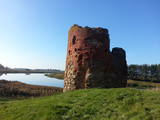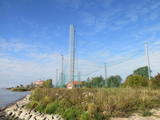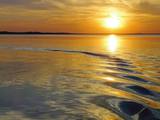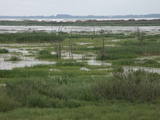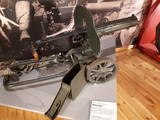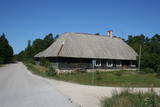| Nr | Nosaukums | Apraksts |
|---|---|---|
|
Augstākā vieta Daugavpils dienviddaļā 18. Novembra ielas apkaimē, kur salīdzinoši nelielā teritorijā, ~ 0,3 km rādiusā atrodas četru konfesiju dievnami – Daugavpils Pirmais vecticībnieku lūgšanas nams (1908. – 1928.), Daugavpils Sv. Borisa un Gļeba pareizticīgo katedrāle (1905.), Daugavpils Dievmātes katoļu baznīca (1905.) un Daugavpils Mārtiņa Lutera katedrāle (1893.). |
||
|
Smārde ir sena vieta, kas minēta jau 13. gs. dokumentos. Mūsdienās tas ir neliels ciemats ar dzelzceļa staciju un veikalu. Ziemeļaustrumos no Smārdes - Smārdes purvā atrodas bijušās kūdras ieguves vietas. 1. pasaules kara laikā netālu no Smārdes atradās frontes līnija, par ko liecina arī apkārtnē esošās piemiņas vietas. |
||
|
Pankūku kafejnīca. Dažādi oriģināli pildījumi. Kafejnīca piedāvā svaigi grauzdētu kafiju, kafijas un alkoholiskos dzērienus, kā arī uzkodas. Atvērta tipa virtuve. |
||
|
Piltene ir viena no mazākajām un senākajām Latvijas pilsētām. Vēstures avotos Piltene pirmo reizi minēta 1295. gadā, bet pilsētas tiesības tai ir jau no 1557. gada. Laikā no 14. – 16. gs. Piltene bija Kurzemes bīskapijas administratīvais centrs. Vēsturiskās ielas, kas puslokā ietver pilsdrupas, malās saglabājusies 19. gs. pirmās puses koka apbūve. Piltenes bīskapa pili cēla 13. – 14. gs. mijā un izmantoja līdz 16. gadsimtam. Līdz mūsdienām ir saglabājušies tikai pamati un torņa fragmenti Vecventas krastā. |
||
|
Maltas (Borovajas) vecticībnieku kopienas lūgšanu nams ir vietējās
nozīmes arhitektūras piemineklis. Dievnama celtniecība sākta 1931. gadā, un
to cēlis būvuzņēmējs A. Gruncevičs.
|
||
|
Putnu gredzenošanas stacija un putnu vērošanas vieta. |
||
|
Trušu audzēšanas saimniecība "Trušu muiža" savā allaž tapšanas procesā esošajā garaušu muižas kompleksā piedāvā aplūkot 15 – 20 dažādu šķirņu trušus no visas pasaules, kā arī iegūt bildi ar trusi. Lieliska iespēja ciemoties trušu "Harmonijas un miera sētā", tos samīļot, pabarot. "Trušu muiža" iegūst aizvien jaunus kaimiņus un pilnveidojas. Iespēja iegādāties "Trušu muižas" greznumlietas. Vaislas truši un mīļdzīvnieki. Vasaras sezonā (jūnijs - augusts) gaidīs ciemos no otrdienas līdz svētdienai (11:00 – 18:00). Lielākas grupas, iepriekš vienojoties, uzņem arī citā laikā. |
||
|
Rāznas ezers (57,8 km2), saukts par Latgales jūru, pēc ūdens
ietilpības lielākais Latvijā, atrodas Latgales augstienes Rāznavas paugurainē.
Tā gleznainajā apkārtnē paceļas Latgales augstākās virsotnes un
latgaļu pilskalni. Ezera krastos atrodas iecienītas atpūtas vietas. Lai
pasargātu un saglabātu unikālo dabas kompleksu, izveidots Rāznas
Nacionālais parks un teritorija iekļauta Eiropas Savienības aizsargājamo
teritoriju tīklā Natura 2000. Ezerā ir 10 salas, divi līči. Ezera ūdens līmenis
ir 163,8 m virs jūras līmeņa.
|
||
|
Z/s “Rūķīšu tēja” ir viens no lielākajiem ārstniecības augu ražotājiem Latvijā. Uzņēmums produkcijas kvalitāti nodrošina, audzējot un ievācot augus savā saimniecībā un veicot rūpīgu žāvēšanas, uzglabāšanas un fasēšanas procesu. Ražošanas procesā netiek izmantoti aromatizatori, krāsvielas, konservanti un biezinātāji. Grupu ekskursijām neizpaliek arī gardo tēju degustācija un tēju izvēles ieteikumi. Interesantiem ir iespēja arī iegādāties produkciju ražotnes veikaliņā par iepriecinošām cenām. Saimniecībā audzē plašu augu klāstu, no kuriem gatavo tējas - kumelītes, piparmētru, raudeni, klinģerītes, asinszāles, baldriānu, ehināciju, kaķumētru, kaķpēdiņas, mārsilus, melisas, sirdsmāteri, vērmeli u.c augus. Šeit ir īpaši vērts iegriezties tad, kad augi zied un katrs no lauciņiem krāsojas savā, tikai tam raksturīgā tonī. |
||
|
Lubānas ieplakām, kas pieguļ Lubāna rietumu – dienvidrietumu daļai raksturīgi maz izmainīti mežu un purvu kompleksi, kuros ligzdo daudzas retas un aizsargājamas putnu sugas. Šeit sastopami daudzi reti un aizsargājami biotopi. Teritoriju var apskatīt "no malas", pārvietojoties pa Lubāna dambju sistēmu.
|
||
|
Mazirbes kāpās, ziemeļaustrumos no Lielā tīklu šķūņa (tagad vasaras dzīvojamā māja) vienkopus iegūlušas vecās zvejas laivas, kuras šeit atvilka pagājušā gadsimta 50. – 60. gados. Iemesls šādai rīcībai bija individuālās zvejas aizliegums pierobežas režīma zonas dēļ. Mazirbē redzamais ir vienīgais šāda veida „objekts” Latvijas piekrastē. |
||
|
Atrodas 4,5 km ziemeļos no Rīgas – Daugavpils šosejas (A 6), klajā laukā (ap 3 m augsts, ainavisks). Viens no izcilākajiem Latvijas muldakmeņiem, tādēļ ir vērts izmest kādu loku. Akmens augšdaļā ir iekalts gandrīz 2 m garš un ~ 20 cm dziļš muldveida iedobums. Atrodamas ziņas, ka vēl 19. gs. vidū pie akmens ir ziedots ēdiens, monētas u.c. priekšmeti. Pie tā dedzināti ugunskuri un svinēti svētki. Teikas vēsta, ka velns muldā lējis ūdeni un gribējis mīcīt mīklu, kā arī parāvis zem akmens tuvējo māju saimnieku. |
||
|
Saimniecībā nodarbojas ar biškopību. Piedāvā bišu produktus un bišu vaska sveču liešanu, kā arī izbraucienu ar 4/4 automašīnu pa bezceļa trasi, pirti un nakšņošanu. Degustācijai medus maisījumi. Īpašais piedāvājums - mājās cepta maize ar medu. Ar izglītojošu programmu pēc pieprasījuma izbrauc uz skolām un pasākumiem.
|
||
|
Maršruts ved pa dabas parku „Daugavas loki”, ko pagājušā gadsimta astoņdesmitajos gados gribēja appludināt, uzceļot Daugavpils HES. Dabas parka centrālā artērija ir Daugavas senieleja. Daugavas īpatnība ir astoņi lieli upes līkumi - loki, kuru garums sasniedz 4 - 6 km. Upes krasti lielāko augstumu sasniedz t.s. Daugavas vārtos, kur tos iekļauj stāvās un varenās Ververu un Slutišku kraujas. Vairāk kā ½ no teritorijas aizņem meži, kas piemēroti pārgājieniem un dabas vērošanai, ogošanai un sēņošanai. Daugavas ieleja ir floristiskā ziņā viena no bagātākajām Latvijā - tajā ir sastopamas > 800 augu sugas. Šeit ir vērojama multinacionāla vide, kur savijušās latgaļu, lietuviešu, poļu, krievu un baltkrievu tradīcijas un to mantojums. Viena no iecienītām tūristu vietām ir Slutišku sādža, kurai nav līdzīgas citur Latvijā. Maršruta informācija no Latvijas Lauku foruma |
||
|
Ikšķiles vārds Pirmā pasaules kara laikā izskan saistībā ar diviem notikumiem – Ikšķiles priekštilta nocietinājumiem (Nāves sala) un kaujām pie Mazās Juglas upes. 1917. gadā 1. septembra rītausmā Vācijas impērijas armija uzsāka uzbrukumu iepretim Ikšķilei ar mērķi ieņemt Rīgu un saņemt gūstā Krievijas 12. armiju. Ar spēcīgu artilērijas atbalstu vācu vienības izsita Krievijas armijas karavīru daļas no Ikšķiles pozīcijām, kas savukārt ļāva Vācijas armijas karavīriem pa trim pontonu tiltiem šķērsot Daugavas upi. 1.septembra pēcpusdienā vācu izlases vienības sasniedza Mazās Juglas upes apkārtni pie Tīnūžiem, kur tām negaidīti ceļu aizšķērsoja no rezerves steigā atsauktā 8000 vīru lielā 2. latviešu strēlnieku brigāde, kura ieņēma pozīcijas gar Mazās Juglas upi. Latviešu strēlniekiem tika pavēlēts aizkavēt vācu karavīrus, līdz visa 200 00 vīru lielā Krievijas 12. armija izies no aplenkuma, nenokļūstot vācu gūstā. Latviešu strēlnieki savu uzdevumu izpildīja pilnībā, diennakti cīnoties pret gandrīz desmitkārtīgu vācu pārspēku. Kauja pie Mazās Juglas upes bija viena no traģiskākajām un reizē viena no leģendārākajām Latvijas vēstures lapaspusēm. "Tīnūžu muižā" ir izveidota 1. Pasaules kara tēmai un Juglas kaujām veltīta ekspozīcija. |
||
|
Kafejnīca "Kukaburra" atrodas Rīgas - Veclaicenes šosejas (A2) 115. km. Iespējams apskatīt maizes muzeju un piedalīties maizes cepšanā, kas notiek katru nedēļas nogali. Latvisks interjers, mājražotāju un zemnieku produkti. |
||
|
19. gs. 50 gados šeit darbojusies no Žocenes pārceltā skola. Atrodas pie Ģipkas baznīcas. 1938. g. Dundagas korporatīvs te ierīkojis tirgotavu ar pirmās nepieciešamības precēm. |
||
|
Restorāns "Piano" atrodas Liepājā, viesnīcā „Promenade Hotel”, kas iekārtota vēsturiskajos ostas dokos. Sadarbojas ar zemniekiem un zvejniekiem. Nedēļas nogalēs organizē muzikālus pasākumus. Latviešu virtuve: Jēra gaļas zupa, ceptas butes vai sama fileja, pēc tradicionālās zvejnieku receptes pagatavota menca, plānās pankūkas. Īpašais ēdiens: Zvejnieku sagādātais loms ar grilētiem dārzeņiem. |
||
|
The first half of this section leads through magnificent coniferous forests, especially in the Järvevälja landscape reserve, where the trail is surrounded by beautiful dunes in the north and a raised bog in the south. It is well worth visiting the kiosk at Rannapungerja to buy smoked fish – the Lake Peipus vendace (rääbis) and some local farm produce. In the second part, the Forest Trail winds along the coast of the beautiful Lake Peipus. During the summer, when the water level in the lake is lower, beautiful, sandy beaches with wide shallows appear. Past Alajõe, the highest dunes of Lake Peipus (up to 20 m) rise on the landscape, providing a distant view of Lake Peipus, one of the largest lakes in Europe. |
||
|
"Sabiles laivas" Talsu novadā piedāvā laivu nomu, laivu un laivotāju transportu. |
||





